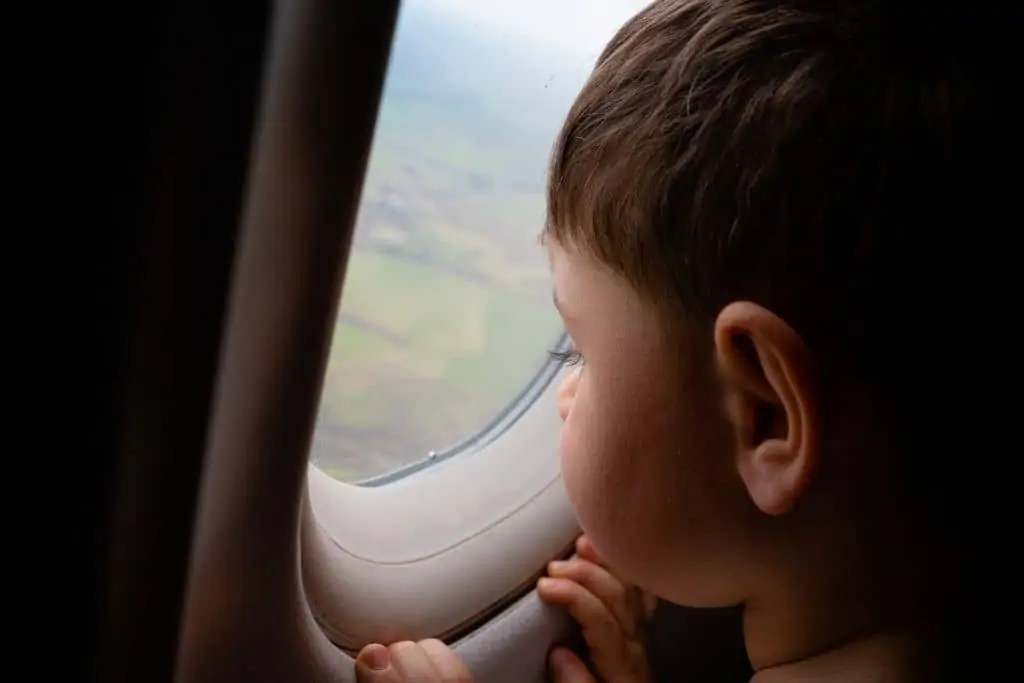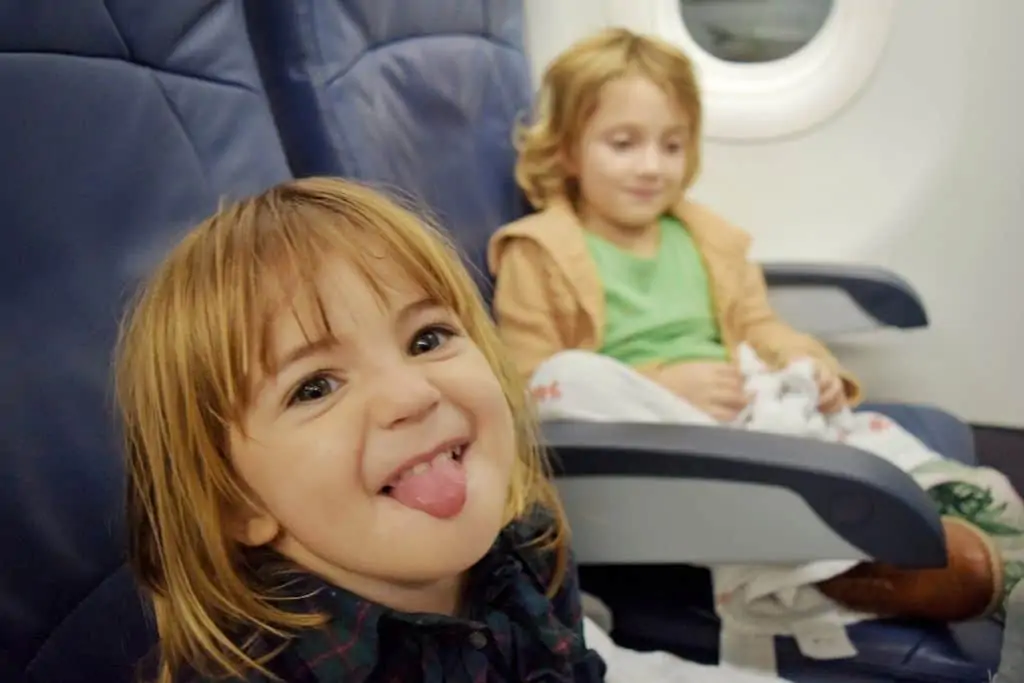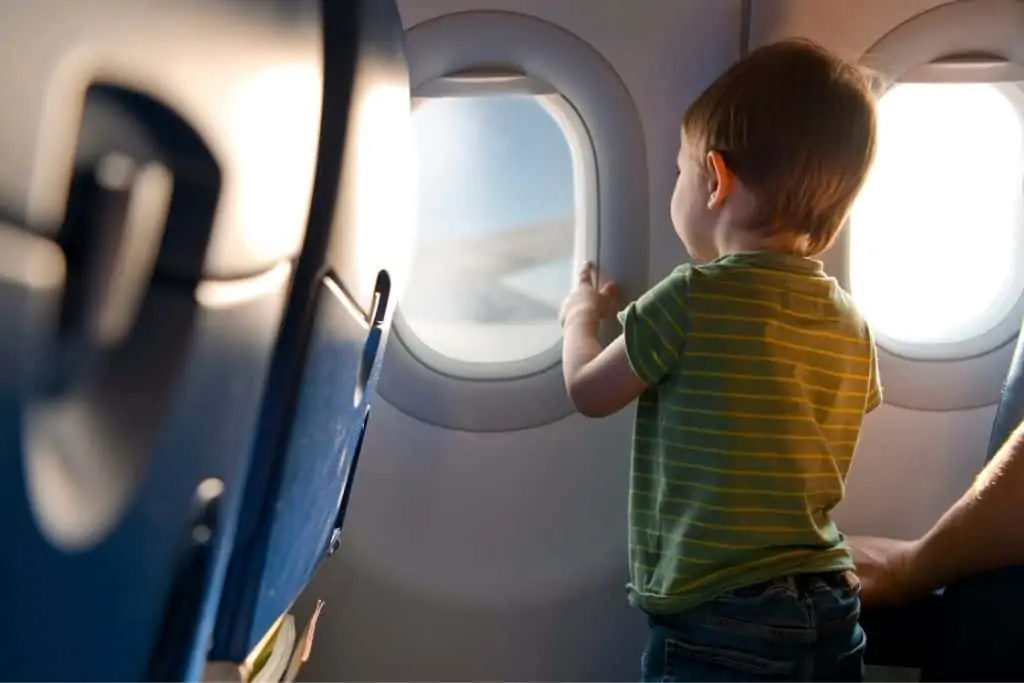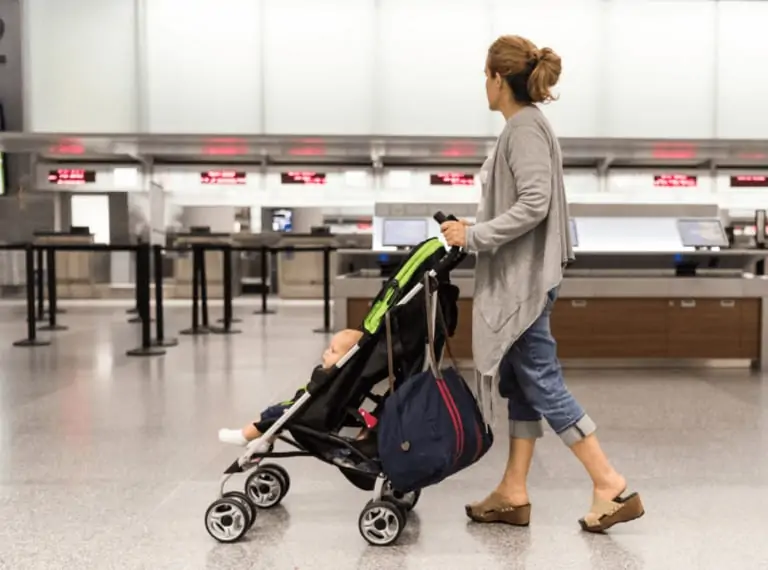When is the safest and riskiest time to take your youngster flying?
Flying with children can be a scary experience for both the child and the parent. Of course, flying is always risky because so many variables could go wrong, but it’s especially risky when you have your small children in tow.
The safest time to take your youngster flying is when they’re over two years old because they’ll be able to understand what’s going on around them and remember it better later on, except perhaps from the age of 3 to 9 months when babies sleep quite a lot. This makes traveling with them more manageable if you don’t count on being near the baby all the time.
The most challenging period to travel with children is between 9 and 24 months. It is best not to plan active travel at all at this age, especially by plane. This does not mean that you have to be cooped up at home. Just be prepared for the sudden and challenging tasks of managing your children.
But there are nuances at every age, so let’s discuss this a little more.
Newborns
Newborns up to two months old should not travel by plane because their immune systems are too weak and more susceptible to germs. Infants 1-3 months can travel but need close monitoring, especially during takeoff and landing when the pressure changes can be challenging for their ears.
Colic or crying babies and unpredictable sleeping and nap times might be a strain on parents, as well as other passengers. New parents may be overwhelmed on lengthy flights or trips with time zone changes, especially if the kid is their first. In addition, moms may still be recuperating from childbirth in some cases.
It’s not pleasant to be on the road with a sick newborn, and situations can get serious fast without immediate medical assistance.
3-9 months old
The safest age group to fly with children is from three months up to nine months. This is because babies can sleep and stay still for long periods at this age. Also, they’re used to being carried around, so handling them on a plane would not be an issue.
This age group is very susceptible to respiratory infections, so try not to fly during cold and flu season.
9-24 months old
This is a more challenging age group to travel with children. They are active and curious and can’t always be expected to sit still for long periods. They also may not be able to understand instructions or directions.
Biting, kicking, and screaming are common behaviors at this age. Some children also speak very little or not at all, making it harder for parents to communicate with them.
Don’t expect a baby this age to understand what’s going on around him and remember it later. This means that the flight could be completely forgotten as soon as you land. Also, long flights might be incredibly challenging because children this age can get bored quickly.
2-3 years old
This is the point when many parents begin to see a brighter future, if not all of the time. Our children’s attention spans improved substantially around the age of two. We discovered that we could use electronic assistance like tablets to give parents rest on long flights.
At this age, you should be able to exercise patience and control. Your toddler will begin to follow instructions like staying seated on command (usually) if you can exercise humility and teach him self-control through firm but polite discipline methods. Hopefully, as a result of your efforts, your child’s punishments will become more successful in the future to concentrate on his studies and work toward a successful career.
At this point, children start to understand routines and how to manage them, so they will most likely not be too overwhelmed by the sudden change of environment.

3-5 years old
Children, this age can understand the overall picture of what is happening during a flight but cannot explain it themselves. This means they might get bored or frightened if they’re too young to watch movies on their electronic devices (if you brought
Children are becoming more independent and can understand more words at this age. They may also be able to follow basic instructions.
Around this age, children can understand the activity on the plane and the ground after landing. In addition, their sense of time is more accurate than in previous years, so they might be able to remember what happened later on.
However, they may still be restless and require much attention, so it might not be the best age group to travel with children.
5+ years old
This is the golden age for some parents. Children this age can usually sit still and follow instructions during flights, or at least some of them.
Their communication skills are often advanced, so they should communicate with you in similar ways that adults do.
You’ll also find that most children at this age can concentrate on electronic devices without getting fidgety. This means they can watch movies or play games to keep themselves occupied for at least part of the flight.
You will still need to do tons of explaining, though, and may find yourself frequently answering questions about why things work a certain way on planes and what’s going on outside, and so on. So be prepared to provide a lot of explanations and be on the lookout for educational opportunities.

Conclusion
Children’s brains are busy and curious. They want to know what is going on in the world around them, why things work a certain way, and how they can learn from their environment. The best age group for travel with children?
3-9 months old or 2-3 years old–the golden age for some parents where you’ll find that most children at this age can concentrate on electronic devices without getting fidgety.
In any case, remember that this is all advice based on my experience. No one can tell you how or when to spend time with your family. If you want to, you can and should travel at any age. It’s just that sometimes it will be more complex, and sometimes it will be easier. But nothing is impossible.







